ASRock Core 100HT-BD : Bringing HTPCs to the Mainstream Market [UPDATED : Noise Issue]
by Ganesh T S on July 19, 2010 9:34 PM EST- Posted in
- Home Theater
- Arrandale
- ASRock
- Media Streamer
- Core i3
- HTPC
One of the most interesting aspects of the Arrandale platform is the fact that the GPU is integrated in the same package as the CPU. The GPU die also contains the PCIe and DDR3 memory controller. While the main CPU is fabricated in the 32nm process, the GPU die is fabricated in the 45nm process. Placing the GPU and CPU in the same package saves on power and also board costs. The graphics part of the GPU die in the package is an evolutionary version of the Intel G45 IGP. A comparison of the Intel HD Graphics in the Arrandales and the earlier G45 is provided below.

An interesting thing to note here is the availability of dynamic frequency scaling for the Arrandale GPU, which actually lowers the power consumption of the system. A 900 MHz GPU part on a typical Clarkdale system would up the TDP by 15W or more compared to the lowest end Clarkdale with a 733 MHz GPU. On the Core 100 HT-BD, however, overclocking doesn't require any special thermal arrangements. The higher frequencies kick in only when the load on the GPU becomes high.
We had earmarked the Clarkdales as the perfect HTPC platforms earlier this year. This Arrandale offering may actually tempt us to revise our opinions, given the form factor and the power profile. We will cover this in detail in the later sections. In the rest of this section, we will cover the features of the Intel HD Graphics engine, as it relates to HTPC users. Before going into the details, let us take a look at what Intel has improved in terms of video decode and processing in this iteration of their IGP.
DXVA Compatibility
Intel's support for DXVA came in for a lot of criticism during the G45 days. The paranoia inside the company made it impossible for open source enthusiasts to get hold of the special DXVA interface used by Intel. It used to be made available under NDA to various ISVs (Independent Software Vendors) such as Cyberlink, ArcSoft etc. Thankfully, things have been slowly changing for the better. Currently, most applications (except for VLC) are able to take advantage of the DXVA acceleration provided by the HD Graphics engine. The screenshot below gives us a quick idea of the DXVA capabilities of the Core i3-330M in the Core 100 HT-BD. It is interesting to observe that there is no VLD mode for VC-1, but we did observe 1080p VC-1 Blu-Rays play with less than 5% CPU usage on ArcSoft TMT. This just indicates that the interface to full acceleration mode for VC-1 is available only under NDA as of now.
HD Audio Bitstreaming
Right from its debut, the Arrandales have been able to bitstream HD audio from Blu-Ray discs played back through Cyberlink's PowerDVD or ArcSoft TMT. The Core 100 HT-BD is no different. We were able to play back all Blu-Rays with bitstreaming to the AV receiver, as the following screenshots show. In addition, hardware acceleration with Intel HD Graphics shows its class, with low CPU utilization being observed during playback. Despite the red spikes observed in the DPC Latency Checker program, we didn't notice any audio dropouts or stutters in the video.
Using the open source ffdshow Audio Decoder, HD audio can also be bitstreamed out of standalone MKVs and M2TS files. (More on this in the next section)
With the above features, Intel HD Graphics seems to be a winner, and the Core 100 HT-BD could potentially be the utopian HTPC that enthusiasts have been searching for. Is that really the case?
Driver Support - Intel Misses the Boat!
Since the release of the G45, videophiles have been clamouring for the support of 23.976 fps display refresh rate. Intel caved in and released a driver where you could choose 23 Hz in the graphics control panel. Unfortunately, this only results in a refresh rate of 24 fps. While watching videos encoded at 23.976 fps, this results in a small stutter every 40 seconds or so. Most people get past this by setting the refresh rate of their display to 60 Hz. However, dedicated enthusiasts still see this as a major shortcoming of the platform.
Another issue which has remained since the G45 days is the efforts taken to open up the DXVA specifications of the GPU for open source developers. Lot of progress has been made over the years, but full VC-1 decode acceleration remains elusive in applications like MPC-HC or VLC. As we discussed in the DXVA Compatibility subsection, the VC1_VLD mode which is commonly utilized by open source video decoders is absent. However, Intel's marketing team does indicate complete VC-1 decode acceleration. We can only surmise that this is made available for the Microsoft and other ISV decoders to make use of.
The drivers supposedly support advanced deinterlacing, but users do not have as much control over the algorithms used as they have when using ATI HTPC cards such as the Radeon 5xxx series. Noise reduction algorithms are also not transparent to the users. The frequency of driver updates is rather low, and issues continue to remain unaddressed.
If the end user can put up with these iGPU limitations (personally, I can), the Core 100 HT-BD is indeed a very good choice. This will be further elaborated in the next few sections.


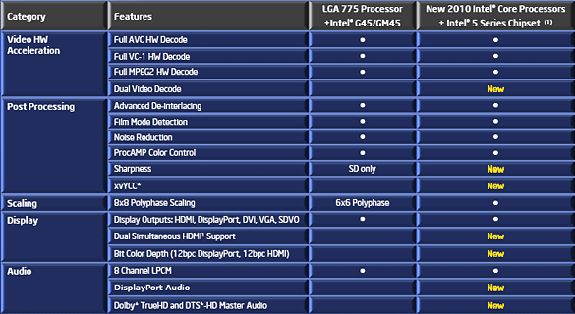
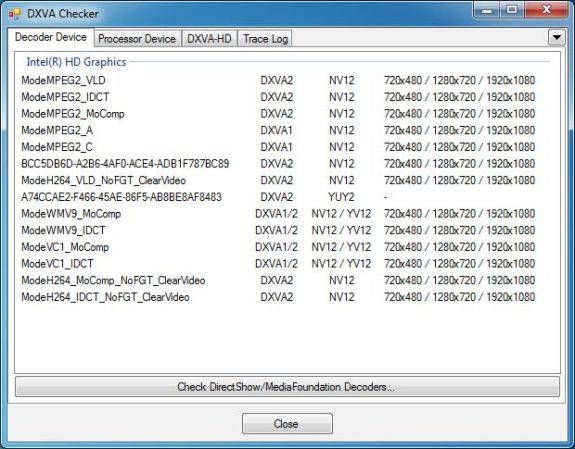
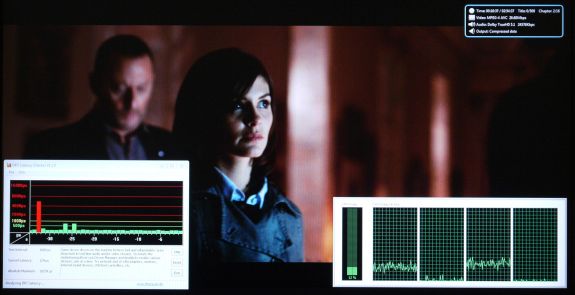
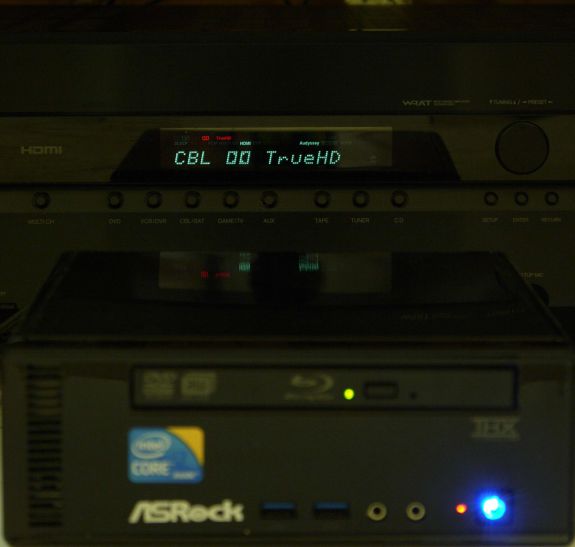
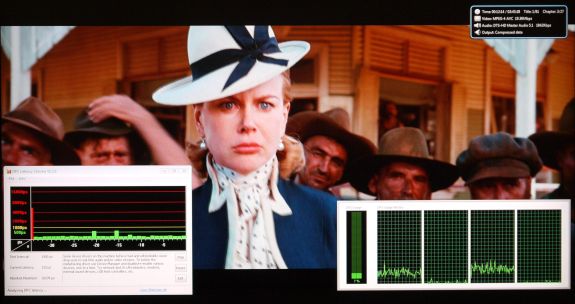
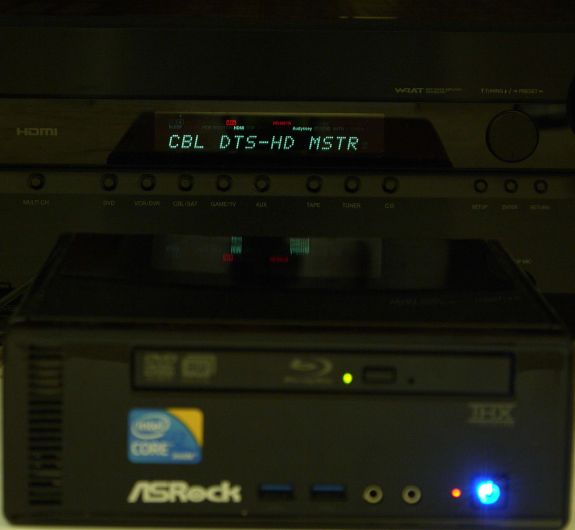








107 Comments
View All Comments
ganeshts - Tuesday, July 20, 2010 - link
erictorch,Thanks for informing me about eWiz carrying the mobile processor. We searched on the usual haunts (Amazon and Newegg), and neither of them carried the processor
I perused further, and it looks like the i3-330M is the only i series processor they have (The i7 mobile they carry has no GPU die in the package and its TDP is 45W).
In any case, I couldn't find a mobo based on the HM55. Are you aware of any with the PGA 988 socket?
By the way, I did see AHCI is selectable in the BIOS, but didn't personally verify whether it works. I will get back to you here in a couple of days if it doesn't :)
erictorch - Tuesday, July 20, 2010 - link
I stumbled upon this list of mini-itx motherboardshttp://www.silentpcreview.com/forums/viewtopic.php...
with froogle.com I was able to find the
IEI KINO-QM57A $320
IBASE MI953F $440
DFI CP100-NRM $400
I was also able to find the i5 mobile CPU through pricewatch.com
ganeshts - Tuesday, July 20, 2010 - link
Thanks for the links, erictorch.At $320 for the board, a build similar to the Core 100 is going to be pretty costly.. We had budgeted $140 for the board.
I wonder how many end users actually end up doing builds based on these mobos.
But you are right! It is possible to do such a build on one's own if the necessary efforts are taken. However, most people will go in for the Clarkdale builds because they are much more cost efficient.
spddemon - Wednesday, July 21, 2010 - link
That is very true, ganeshts; however, I would love to see what the end result would be with one of those boards instead of a clarkdale...I am more than willing to spend a couple hundred more for a true low powered system providing my performance and functionality were not hindered.
I was targeting a Core i3 530 but if the performance per watt of the 330 is close to the 530 then it could be a great trade off.
I will have to add this info to my build sheet and see where it goes.. I have sifted the hardware down quite a bit, but I still have a lot of products to research before i start..
Riccardo - Tuesday, July 20, 2010 - link
Hi Ganesh,Good work on this review - I really appreciate the HTPC focus on this one. I look forward to seeing it used again in relevant reviews. Thanks!
Pessimism - Tuesday, July 20, 2010 - link
I'd pay an extra $5 for a remote that doesn't look so cheesy and cheap. They aren't the only company at fault though. I see a LOT of slick looking devices with cheap, tacky, flimsy looking remotes that don't match up with the look of the device whatsoever.OblivionLord - Tuesday, July 20, 2010 - link
I'm thinking that people would be more inclined to believe your point of using a USB capture card if they knew the real benefit of it compared to a typical PCI Capture card. The only real physical drawback with the USB card is that you need a second one if you want a dual tuner setup.The other problem is that the quality of the captured video produced by a USB card is inferior to a PCI capture card. This is what I've come to believe since I've never owned a USB card for this purpose.
Perhaps you should do a comparison of a few USB capture devices vs PCI capture cards. This will show the truth.
pcfxer - Tuesday, July 20, 2010 - link
I'm surprised that you chose A-weighting for the measurement of the machine. I'm also surprised that you used the Radioshack and took the 53dB as a "solid" measurement. I have the same SPL meter and its accuracy does not live in the 50dB range. It is far more accurate and stable (if you've used this to get any meaningful information you'll know what I mean) 65+dB.That said, I am fully aware of the noise required to gain measurement on that darn thing. That "HTPC" is effing LOUD! Even inside my case I get the good old Lo A-weighted/C-weighted.
ganeshts - Tuesday, July 20, 2010 - link
pcfxer,Thanks for your feedback. I will keep this in mind for future reviews.
Shadowmaster625 - Tuesday, July 20, 2010 - link
Mainstream Market? For $700? I got news for you... there may be millions of mindless drones rushing out to buy iCrap, but this is way above and beyond mainstream for a HTPC. It only costs $100 to build a HTPC. Anything more than that and you may as well go on ebay and buy a notebook with a damaged LCD and use that as a HTPC (assuming it has hdmi out of course).